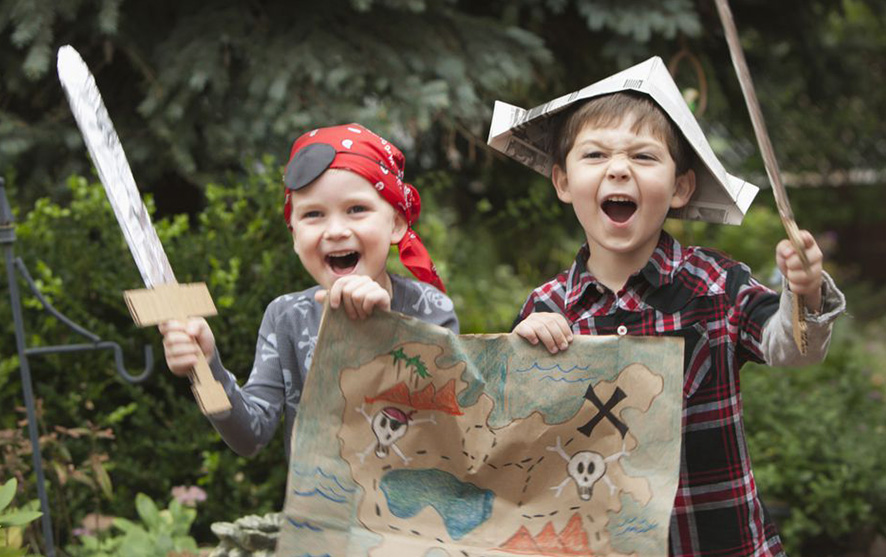Tidying up the garden grass
What you need Child-friendly scissors Some outdoor space - garden, park or grassy area Benefits [...]
Read more

This is a great activity to get our imaginations working. It also helps to develop your child’s mathematics & literacy skills, and helps them to explore their creative side!
In this experience, we will be exploring our inner pirates, or perhaps fairies. Here are a few examples of some great creations to use outdoors, or could be adapted for an indoor physical activity.
Paper/cardboard pirate ships:
These boats can be made from practically anything around the house: plastic vegetable boxes or cardboard for the base, straws or sticks and coloured paper for the sail. Be as creative as possible!
If your boat creation is made with plastic, it can sail on puddles, streams, ponds, or even in the bath. Pirates need a wash too!
Alternatively to making small pirate ships, why not try making a large ship your child can sit in and be the pirate? You could use large cardboard boxes, a broom or stick to make the sail and old sheets/towels or other fabric. Why not try walking the plank? You could walk along a low wall or bench before jumping into the ‘sea’. This could also be adapted to jumping from a low chair or sofa. Have fun and be imaginative!
Fairy flying:
Can your child flutter their pretend fairy wings and fly around? Get them to think about the way the fairy might move and have a go.
Beads and jewellery hunt:
Collect any beads, jewellery or buttons you may have around the house. Alternatives would include shells, pebbles or any small ‘treasure’. You can use this as a treasure hunt in the garden or park. You could have them hidden around the area for your ‘pirates’ or ‘fairies’ to go and find.
For older children, to make this more challenging, you could even draw out a treasure map showing where treasure is hidden, e.g. underneath the climbing frame, beside a tree or in different rooms in the house if exploring indoors.
This is a great opportunity to explore symbols and their meaning with your child, as well as positional language as you discuss the treasure’s location as under/beside/behind/on top, etc. Fairies may equally follow a fairy map and ‘fly’ to collect their treasure!